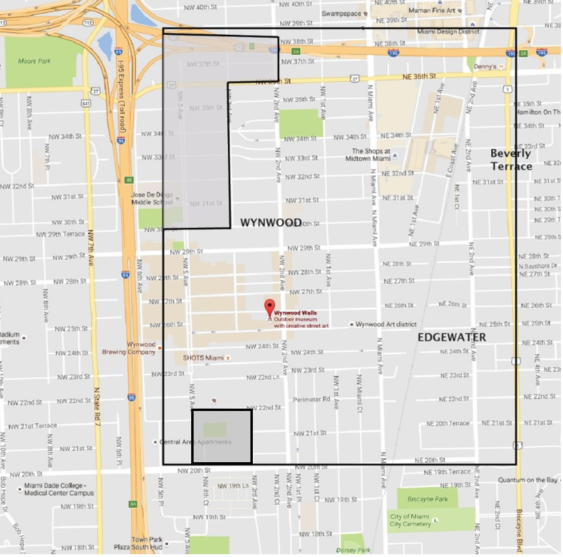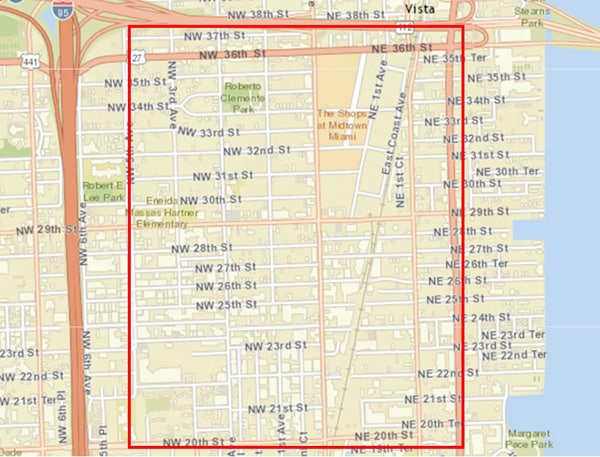Archive for the ‘Zika virus’ Category
Zika in the US: Current data
Friday, August 26th, 2016US States
- Locally acquired mosquito-borne cases reported: 29
- Travel-associated cases reported: 2,487
- Laboratory acquired cases reported: 1
- Total: 2,517
- Sexually transmitted: 22
- Guillain-Barré syndrome: 7
US Territories
- Locally acquired cases reported: 8,968
- Travel-associated cases reported: 43
- Total: 9,011*
- Guillain-Barré syndrome: 26
Florida, 8/25/16: 11 new travel related cases today
Friday, August 26th, 2016|
Infection Type |
Infection Count |
|
Travel-Related Infections of Zika |
534 |
|
Non-Travel Related Infections of Zika |
43 |
|
Infections Involving Pregnant Women |
70 |
CDC Expands Guidance for Travel and Testing of Pregnant Women, Women of Reproductive Age, and Their Partners for Zika Virus Infection Related to Mosquito-borne Zika Virus Transmission in Miami-Dade, Florida
Saturday, August 20th, 2016CDC Health Alert Network (HAN) Health Advisory: CDC Expands Guidance for Travel and Testing of Pregnant Women, Women of Reproductive Age, and Their Partners for Zika Virus Infection Related to Mosquito-borne Zika Virus Transmission in Miami-Dade, Florida
Centers for Disease Control and Prevention (CDC) sent this bulletin at 08/19/2016 04:44 PM EDT
| The following CDC Health Alert Network (HAN) Health Advisory message was issued August 19, 2016. You are receiving this information because you subscribe to COCA email updates. If a colleague forwarded this email to you, yet you would like to receive future updates directly from COCA, click here.
If you have any questions on this or other clinical issues, please e-mail coca@cdc.gov On behalf of the Clinician Outreach and Communication Activity (COCA) |
||
|
Guatemalan authorities on Wednesday confirmed the Central American country’s first case of a baby born with microcephaly linked to Zika.
Friday, August 19th, 2016Haiti has identified its first case of the birth defect microcephaly linked to the Zika virus
Friday, August 19th, 2016Florida: There are 18 new travel-related cases today with seven in Miami-Dade, four in Palm Beach, three in Broward, one in Brevard, one in Lee, one in Marion and one in Pinellas counties.
Friday, August 19th, 2016August 18, 2016
Department of Health Daily Zika Update
Contact:
Communications Office
NewsMedia@flhealth.gov
(850) 245-4111

Tallahassee, Fla. — In an effort to keep Florida residents and visitors safe and aware about the status of the Zika virus, the department will continue to issue a Zika virus update each week day. Updates will include a CDC-confirmed Zika case count by county and information to better keep Floridians prepared.
The department has conducted testing for the Zika virus for more than 3,673 people statewide. Florida currently has the capacity to test 4,997 people for active Zika virus and 2,799 for Zika antibodies. Per the Governor’s direction on August 3, all county health departments are now offering free Zika risk assessment and testing to any pregnant woman who would like to be tested.
There are 18 new travel-related cases today with seven in Miami-Dade, four in Palm Beach, three in Broward, one in Brevard, one in Lee, one in Marion and one in Pinellas counties. Please visit our website to see the full list of travel-related cases.
There are two new non-travel related cases today, both are located outside of the one-square mile area in Miami-Dade County. While the department is continuing to investigate areas in Miami-Dade and Palm Beach Counties where local transmissions of Zika may have occurred, the department still believes active transmissions are still only occurring in the area that is less than one square mile in Miami-Dade County.
For a complete breakdown of non-travel and travel-related Zika infections to-date, please see below.
|
Infection Type |
Infection Count |
|
Travel-Related Infections of Zika |
479 |
|
Non-Travel Related Infections of Zika |
35 |
|
Infections Involving Pregnant Women |
63 |
ACTIVE INVESTIGATIONS
The department is currently conducting nine active investigations. We have moved the information regarding the investigations outside the Wynwood area to the Zika webpage, here.
Identified one-square mile in Miami-Dade – Two (2) original cases
|
Total # of Samples Collected |
Negative Samples |
Positive Samples |
Pending Results |
|
519 |
492 |
23 |
4 |
Door to door outreach and sampling continue. Mosquito abatement and reduction activities are on-going.
On August 4, the department announced we have completed testing in a 10 block area of the northwest quadrant of the one-square mile area and no people within the 10 block radius tested positive. On August 11, the department announced that it completed testing in an additional four block area and no people within that four block area tested positive. A map detailing the area is below. The CDC continues to monitor the area per their guidelines.
CLOSED INVESTIGATIONS
- The department has closed out the investigations into the first cases in Miami-Dade and Broward County (two cases). The department tested 124 close contacts and individuals from the community and found no additional positives.
The department still believes active transmissions of the Zika virus are occurring in one small area in Miami-Dade County, just north of downtown. The exact location is within the boundaries of the following area: NW 5th Avenue to the west, US 1 to the east, NW/NE 38th Street to the north and NW/NE 20th Street to the south. This area is about one square mile and a map is below to detail the area. This remains the only area of the state where the department has confirmed there are local transmissions of Zika. If investigations reveal additional areas of likely active transmission, the department will announce a defined area of concern.
One case does not mean active transmission is taking place and that’s why the department conducts a thorough investigation by sampling close contacts and community members around each case to determine if additional people are infected. The department has not yet determined where the individual in Palm Beach County or the nine individuals outside the one-square mile in Miami-Dade County likely contracted Zika and will share more details as the investigations progress. If the department finds evidence that active transmission is occurring in an area, we will notify the media and the public.
CDC recommends that women who are pregnant or thinking of becoming pregnant postpone travel to areas with widespread Zika infection. Florida’s small case cluster is not considered widespread transmission, however, pregnant women are advised to avoid non-essential travel to the impacted area in Miami-Dade County (see map below). If you are pregnant and must travel or if you live or work in the impacted area, protect yourself from mosquito bites by wearing insect repellent, long clothing and limiting your time outdoors.
According to CDC guidance, providers should consider testing all pregnant women with a history of travel to a Zika affected area for the virus. It is also recommended that all pregnant women who reside in or travel frequently to the area where active transmission is likely occurring be tested for Zika in the first and second trimester. Pregnant women in the identified area can contact their medical provider or their local county health department to be tested and receive a Zika prevention kit. CDC recommends that a pregnant woman with a history of Zika virus and her provider should consider additional ultrasounds. Additionally, the department is working closely with the Healthy Start Coalition of Miami-Dade County to identify pregnant women in the one square mile area to ensure they have access to resources and information to protect themselves. CDC recommends that a pregnant woman with a history of Zika virus and her provider should consider additional ultrasounds.
Pregnant women can contact their local county health department for Zika risk assessment and testing hours and information. A Zika risk assessment will be conducted by county health department staff and blood and/or urine samples may be collected and sent to labs for testing. It may take one to two weeks to receive results.
Florida has been monitoring pregnant women with evidence of Zika regardless of symptoms since January. The total number of pregnant women who have been or are being monitored is 63.
On Feb. 12, Governor Scott directed the State Surgeon General to activate a Zika Virus Information Hotline for current Florida residents and visitors, as well as anyone planning on traveling to Florida in the near future. The hotline, managed by the Department of Health, has assisted 4,216 callers since it launched. The number for the Zika Virus Information Hotline is 1-855-622-6735.
The department urges Floridians to drain standing water weekly, no matter how seemingly small. A couple drops of water in a bottle cap can be a breeding location for mosquitoes. Residents and visitors also need to use repellents when enjoying the Florida outdoors.
For more information on DOH action and federal guidance, please click here.
For resources and information on Zika virus, click here.
About the Florida Department of Health
The department, nationally accredited by the Public Health Accreditation Board, works to protect, promote and improve the health of all people in Florida through integrated state, county and community efforts.
Follow us on Twitter at @HealthyFla and on Facebook. For more information about the Florida Department of Health please visit www.FloridaHealth.gov.
A Texas resident who recently traveled to an area of Miami with local Zika transmission has tested positive for the virus.
Tuesday, August 16th, 2016“…This is the first Texas case to be linked to travel within the continental United States….”
WHO: Zika report around the world
Saturday, August 13th, 2016Summary
- As of 10 August 2016, 69 countries and territories (Fig. 1, Table 1) have reported evidence of mosquito-borne Zika virus transmission since 2007 (66 of these countries and territories have reported evidence of mosquito-borne Zika virus transmission since 2015):
- 52 countries and territories with a first reported outbreak from 2015 onwards (Table 1).
- Four countries are classified as having possible endemic transmission or have reported evidence of local mosquito-borne Zika infections in 2016.
- 13 countries and territories have reported evidence of local mosquito-borne Zika infections in or before 2015, but without documentation of cases in 2016, or with the outbreak terminated.

- The Cayman Islands, a British Overseas Territory in the Caribbean, is the latest territory to report locally-acquired mosquito borne Zika virus infection.
- Since February 2016, 11 countries have reported evidence of person-to-person transmission of Zika virus, probably via a sexual route (Table 2).
- As of 10 August 2016, 15 countries or territories have reported microcephaly and other central nervous system (CNS) malformations potentially associated with Zika virus infection or suggestive of congenital infection. Canada is the latest country to report a case of congenital malformation associated with a travel-related case of Zika virus infection. Four of the 15 total countries reported microcephaly cases born from mothers in countries with no endemic Zika virus transmission but who reported recent travel history to Zika-affected countries in the WHO Region of the Americas (Table 3).
- As of 10 August 2016, the United States Centers for Disease Control and Prevention (US-CDC) reported 15 live-born infants with birth defects and six pregnancy losses with birth defects with laboratory evidence of Zika virus infection.
- As of 10 August 2016, 16 countries and territories worldwide have reported an increased incidence of Guillain-Barré syndrome (GBS) and/or laboratory confirmation of a Zika virus infection among GBS cases (Table 4). Grenada is the latest country to report a case of GBS associated with a confirmed Zika virus infection.
- In Guinea-Bissau, on 29 June 2016, Institute Pasteur Dakar (IPD) laboratory technicians confirmed that three of 12 samples tested positive for Zika by PC-R. All 12 samples tested negative against IgM Zika. One additional sample from a recent case also tested positive for Zika virus infection. All four samples were sent to IPD on 1 July for gene sequencing and the results are pending. Results from the 22 additional samples collected from the Bijagos archipelago and sent to IPD are negative with ELISA and PCR testing. The same samples were also sent to Dakar for confirmation. A further total of 12 new samples were collected and results are still pending.
- Two cases of microcephaly have been reported in the Western region of Gabu in Guinea-Bissau. The family members of the two children with microcephaly have not travelled outside Guinea-Bissau. The investigations regarding these two cases are ongoing. Trainings for regional health staff on the Zika case definition and other areas are planned to help ensure that cases are detected efficiently and effectively.
- The joint mission by staff from the WHO Regional Office for Africa and from WHO headquarters to Guinea-Bissau has concluded and priority activities and gaps were identified as the following: additional financial resources to reinforce leadership and coordination mechanisms of the Emergency operations Centre (EOC); reinforcement of epidemiologic and entomologic surveillance systems; increasing laboratory capacity at three levels; strengthening of response to Zika cases in terms of detection, community involvement and risk communication; and continued monitoring of Zika virus and its complications.
- Zika virus test kits have been made available by the local authorities at the Central Public Health Laboratory in Rio de Janeiro in Brazil and symptomatic athletes, volunteers, visitors and residents are encouraged to get tested.
- WHO has developed advice and information on diverse topics in the context of Zika virus.
CDC: Zika Cases in the US as of August 10, 2016 (5 am EST)
Saturday, August 13th, 2016As of August 10, 2016 (5 am EST)
- Zika virus disease and Zika virus congenital infection are nationally notifiable conditions.
- This update from the CDC Arboviral Disease Branch includes provisional data reported to ArboNET for January 01, 2015 – August 10, 2016.
US States
- Locally acquired mosquito-borne cases reported: 6
- Travel-associated cases reported: 1,955
- Laboratory acquired cases reported: 1
- Total: 1,962
- Sexually transmitted: 22
- Guillain-Barré syndrome: 6
US Territories
- Locally acquired cases reported: 6,587
- Travel-associated cases reported: 31
- Total: 6,618*
- Guillain-Barré syndrome: 20
*Sexually transmitted cases are not reported for areas with local mosquito-borne transmission of Zika virus because it is not possible to determine whether infection occurred due to mosquito-borne or sexual transmission





